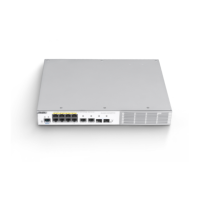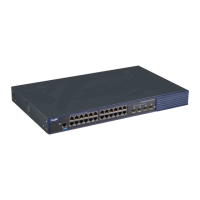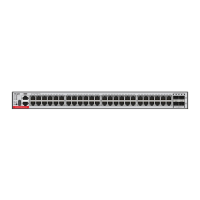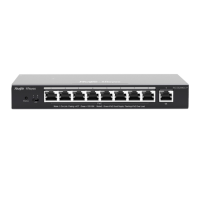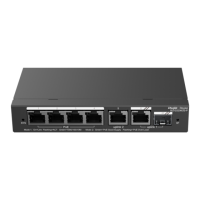CLI Reference Network Connectivity Test Tool Configuration Commands
4 10.10.30.1 10 msec 0 msec 0 msec
5 218.5.3.254 0 msec 0 msec 0 msec
6 61.154.8.49 10 msec 0 msec 0 msec
7 202.109.204.210 0 msec 0 msec 0 msec
8 202.97.41.69 20 msec 10 msec 20 msec
9 202.97.34.65 40 msec 40 msec 50 msec
10 202.97.57.222 50 msec 40 msec 40 msec
11 219.141.130.122 40 msec 50 msec 40 msec
12 219.142.11.10 40 msec 50 msec 30 msec
13 211.157.37.14 50 msec 40 msec 50 msec
14 222.35.65.1 40 msec 50 msec 40 msec
15 222.35.65.18 40 msec 40 msec 40 msec
16 222.35.15.109 50 msec 50 msec 50 msec
17 * * *
18 64.170.98.32 40 msec 40 msec 40 msec
traceroute ipv6
Use this command to show all gateways passed by the test packets from the source address to the destination
address.
traceroute [ ipv6 ] [ ip-address [ probe number ] [ timeout seconds ] [ ttl minimum maximum ] ]
Specifies an IPv6 address.
Specifies the number of probe packets to
be sent.
Specifies the timeout time.
Specifies the minimum and maximum
TTL values.
Use the traceroute ipv6 command to test the connectivity of a
network to exactly locate the network connectivity problem when the
network failure occurs. To use the function domain name, configure
the domain name server. For the concrete configuration, refer to the
DNS Configuration part.
The following is two examples of the application bout traceroute ipv6,
the one is of the smooth network, and the other is the network in
which some gateways aren‟t connected successfully.
1. When the network is connected smoothly:
Ruijie# traceroute ipv6 3004::1
< press Ctrl+C to break >
Tracing the route to 3004::1
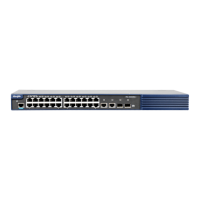
